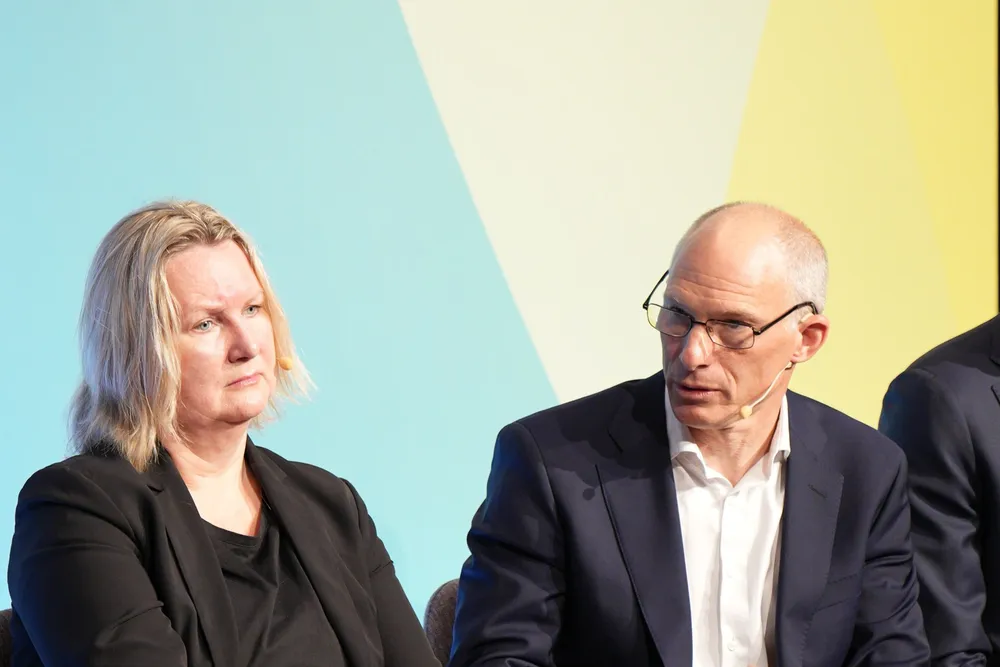CfDs can lop 2% off our capital costs, says top Orsted executive
The last five years have been a test lab for accelerating and de-risking offshore wind, says development head Clark

As Europe’s offshore wind industry battles to get its new investments over the line in the face of challenging market conditions, access to Contracts for Difference (CfDs) which are able to trim capital costs by around 2%, along with effective de-risking tools, can help save the day, an executive with Danish developer Orsted said on Tuesday.
"It seems to me that the last five years or so have been a real test lab for offshore wind across key European countries," Orsted’s head of development for Europe Duncan Clark told an audience at the opening of the WindEurope 2025 annual event in Copenhagen.
"We've been testing out what works in terms of auction designs, remuneration mechanisms and project frameworks and I think what we've learned is that those that prioritise the realisation of projects — the de-risking of projects and investments — have had more success and, also, that CfDs are a really useful tool."
Clark said a well-designed CfD mechanism can reduce the cost of capital by two whole percentage points.
“That is a great deal for these capital intensive projects. It can mean reducing the cost of electricity through the life of a wind farm by 15% or more. That's an enormous saving,” he said, citing positive examples in multiple countries, notably the UK and Poland.
In Clark’s view, offshore wind continues to receive a vote of confidence from European governments even as the learning process continues on both sides
“Of course we need to do other stuff as well. We need to accelerate the electrification of industry and create the demand,” he said. “And we also need to de-bottleneck our supply chains."
Orsted is one of several big developers that has also been directly impacted by grid congestion delays, and Clark was asked to comment on the fate of the Borkum Riffgrund 3 offshore wind farm in Germany.
This 900MW array will only be commissioned in 2026, rather than 2025, due to delays with the connection. Clark said such problems are usually a reflection of auction design or project frameworks.
“Realising projects means working out the decision points and asking, what are the unacceptable, unmanageable risks,” he said.
“Whoever is carrying those, whether it's society in the form of compensated delay or developers in the form of uncompensated delay, you can't manage and actively mitigate that if you've got the framework design wrong.”
On the demand side, Clark admitted that the industry is still falling short when it comes to forming partnerships with energy-intensive consumers.
“It's difficult and it's not happening,” he said. “But if we don't succeed and if steel and chemicals and those high energy-intensive industries don't electrify, it means they're either continuing to use fossil fuels or, even worse, they are using fossil fuels and just relocating outside Europe.
Failure on this front means a missed opportunity to reduce energy imports, to lessen environmental impacts, to develop technology and to create long-term industrial solutions that work for society, Clark warned.
"We have to work out the role of society and the state here. Once again, it's about creating more certainty and de-risking to help with the acceleration."
Clark also backed the role of Carbon Contracts for Difference (CCfDs) as key to building affordability.
These mechanisms allow companies reducing emissions and converting their production to climate-friendly production to be eligible programmes for grants and other benefits under the programme.
“I think the wind sector also has got to engage with lead markets but I also think we need to see much more of the carbon intensity of these products being marked and made visible through the supply chains,” he said.
(Copyright)